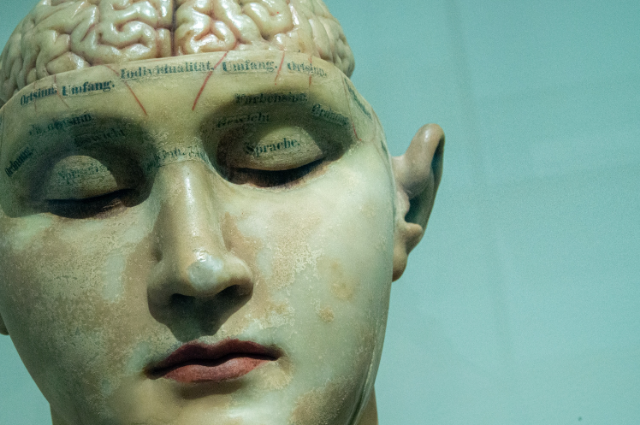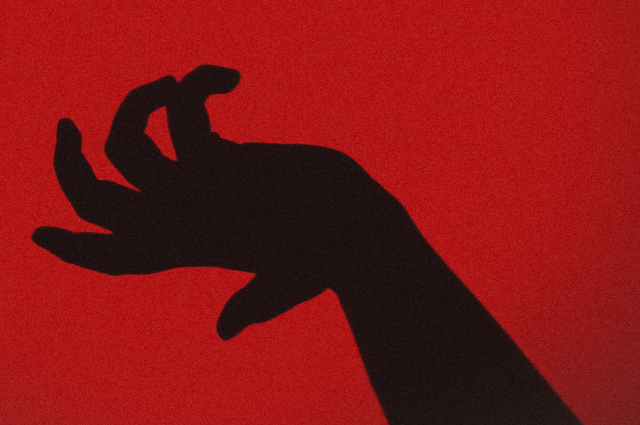
In the labyrinth of human cognition, there exists a shadowy realm that persists to intrigue and bewilder humanity - the enigmatic domain of the "criminal mind." Comprehending the intricate psychological aspects of criminal behavior is akin to deciphering a cryptic code, concealed beneath layers of societal norms and individual motivations. To embark on this cerebral journey is to peel back the coatings of criminality, revealing the most profound excavations of the human psyche.
Defining the Criminal Mind:
To embark on our quest to unravel the secrets of the criminal mind, we must first establish a clear definition. The "criminal mind" encompasses a complex and multifaceted set of mental processes that lead individuals to engage in activities deemed illegal, immoral, or harmful to society. It goes beyond the mere act of breaking the law, delving deep into the intricate web of motives, personality traits, and environmental influences that drive a person toward criminal conduct.
Within the scope of the criminal mind, we encounter an amalgamation of dark impulses, psychological struggles, and a tangled knot of sociocultural factors. It is the crucible where the profound complexities of human nature meet the harsh realities of a justice system, all the while challenging our understanding of right and wrong.
THE GENETIC INTRIGUE
Criminals, it seems, may have a unique genetic fingerprint, an enigmatic signature etched within their DNA. Recent research in this realm has uncovered astonishing connections.
To investigate this intriguing nexus, scientists have turned to twin studies. They've pried into the lives of identical twins who share the same genetic makeup.
The findings? If one twin dabbles in criminality, the odds of the other twin doing the same are significantly higher. It's a tantalizing glimpse into the role of genetics.
But it's not all about nature; nurture plays its part too. A riveting research avenue has explored epigenetics, the science of how environmental factors can modify gene expression. Could a turbulent upbringing or a traumatic childhood trigger dormant criminal genes? It's an arresting question with answers that are as intricate as the human genome itself.
The Brain's Dark Symphony
The brain, that intricate orchestra of thoughts and emotions, has also taken center stage in the criminal mind saga. Neurological factors influence behavior in ways that are nothing short of spellbinding. At the heart of the matter lies the amygdala, our emotional epicenter. Scientists have discovered that an overactive amygdala may be linked to impulsivity and aggression - traits often found in criminals.
The prefrontal cortex, responsible for decision-making and impulse control, plays a pivotal role. Recent imaging studies reveal that in some criminals, this part of the brain might resemble a turbulent sea - underdeveloped and out of control. It's as if the conductor of the symphony is missing, and the musicians are running wild.
Criminality and Genes
Perhaps the most captivating twist in this narrative is the intertwining dance of genes and brain structures. Recent research has uncovered a connection between certain genetic variations and abnormalities in the brain. These genetic deviations appear to alter the brain's structure and functioning, leading to an increased propensity for criminal behavior.
The MAOA gene, often dubbed the "warrior gene," has captured the imagination of researchers. It appears that when this gene is overactive, it can lead to increased aggression and impulsivity.
Could it be that criminals possess a genetic predisposition that compels them to dance to the tune of this warrior gene?
PSYCHOPATHY AND CRIME
Mark 0: The character
The journey begins with personality traits – the distinct hues that paint the canvas of one's character. In the realm of criminal psychology, certain traits emerge as critical players. We delve into the realms of impulsivity, sensation-seeking, and aggressiveness, traits that often bridge the chasm between ordinary individuals and criminals. As we traverse this psychological landscape, we encounter the 'Big Five' personality traits: extraversion, agreeableness, conscientiousness, neuroticism, and openness.
How do these traits shape criminal inclinations, and what role do they play in the tapestry of criminality?
Mark 1: The disorder
Our journey takes us to a more shadowy and unsettling place—the domain of mental disorders. Mental health, or the lack thereof, casts a long, dark shadow over the criminal mind. It is here that the narrative becomes particularly poignant. We explore the intricate connection between conditions like antisocial personality disorder, borderline personality disorder, and schizophrenia, and their role in the descent into criminal behavior.
How do these disorders amplify the siren call of criminality, and can they ever be seen as explanations, or merely tragic tributaries?
Mark 2: Psychopathy
As our exploration deepens, we come face to face with the most chilling aspect of the criminal mind—the concept of psychopathy. This is where we encounter the ultimate embodiment of malevolence, a disconcerting blend of charm and ruthlessness. Psychopaths, often adept at manipulating and devoid of empathy, are captivating subjects of study in our dark odyssey. We seek to unveil the relationship between psychopathy and criminal actions – a linkage that has haunted the annals of criminal psychology.
How do these cold, calculated minds navigate the labyrinth of criminality, leaving behind a trail of destruction?
Mark 3: Confluence of factors
As we move forward, it becomes evident that it is not merely one element but the confluence of personality traits, mental disorders, and the chilling allure of psychopathy that fosters criminal behavior. Here, the symphony of the criminal mind reaches its crescendo. We delve into the complex dance between nature and nurture – the interplay of genetic predisposition, traumatic life experiences, and societal influences.
But is the criminal mind an immutable entity, or can understanding these factors lead to redemption and rehabilitation? Is there hope for those ensnared by the haunting melody of criminality?
HOW UPBRINGING, FAMILY, AND SOCIETY SCULPT THE CRIMINAL PSYCHE?

Step onto the stage of a criminal's early life, and you'll discover a theater where the seeds of transgression are sown. It's a realm where the nurturing or neglectful touch of parents can decide one's path. Parental attachment, discipline, and emotional nourishment are threads that weave the complex tapestry of character.
- Nature vs. Nurture: Scrutinizing the age-old debate of genetics vs. environment, we explore how nature and nurture conspire to influence an individual's predisposition to criminal behavior.
- Childhood Trauma: Delve into the haunting corridors of childhood trauma and its role in shaping the minds of potential criminals. Uncover the scars of abuse, neglect, and adversity that can twist innocence into malevolence.
- Role of Parenting: Examine the profound influence of parenting styles, from authoritative to permissive, in setting the stage for a child's moral compass.
On the grand stage of societal influences, the harshest spotlights often reveal the darkest shadows. Poverty, education, and community dynamics collectively sculpt the narratives of countless lives.
- The Poverty Paradox: Investigate the harsh realities of impoverished neighborhoods, where criminal temptations loom larger, and access to legitimate opportunities shrinks. Discuss the relationship between economic hardship and criminality.
- Education's Role: Shine a light on the transformative power of education. Explore how access to quality schooling can act as a lifeline, rescuing individuals from the clutches of crime.
- Community Bonds: Peel back the layers of communities, where both resilience and vulnerability reside. Discuss the impact of close-knit social circles on criminal inclinations. Examine how a sense of belonging, or the lack thereof, can shape one's destiny.
In our quest to understand the criminal mind, it becomes evident that each individual's story is a unique composition of these multifaceted elements. The contours of the criminal psyche are etched with the strokes of personal experiences, family dynamics, and the societal ecosystem in which one is immersed.
WHEN TECHNOLOGY MEETS CRIMINOLOGY
In the ever-evolving world of criminal psychology, understanding the enigmatic intricacies of the criminal mind is an ongoing quest.
As technology and neuroscience push the boundaries of our knowledge, emerging trends in this field offer a tantalizing glimpse into the future of law enforcement and criminal rehabilitation.
The Digital Profiling Revolution
Criminal profiling, once the realm of seasoned detectives with uncanny instincts, has entered a new era. Thanks to the integration of Big Data and artificial intelligence, the digital profiling revolution has arrived.
Today, investigators and criminal psychologists analyze vast datasets to create eerily accurate profiles of potential offenders. Social media activity, online searches, and digital footprints are the new clues that paint a vivid picture of an individual's predisposition to criminal behavior.
The potential for early intervention is nothing short of revolutionary.
The Neuro-Crime Nexus
Advancements in neuroscience have opened up a previously unimaginable realm of possibilities. Researchers are delving deep into the brains of criminals, mapping neural pathways and identifying patterns that correlate with criminal inclinations.
Brain scans, once mere tools of medical diagnostics, are now revealing the hidden underpinnings of criminal behavior.
The potential here is monumental - understanding the biological markers of criminality could lead to groundbreaking preventative strategies and therapies.
Predictive Policing and AI
The amalgamation of artificial intelligence and predictive policing is a concept that was once confined to the realm of science fiction. Today, it's a burgeoning reality.
Algorithms analyze historical crime data, demographics, and even weather patterns to predict where crimes are likely to occur. Law enforcement agencies are adopting this technology, leading to more efficient resource allocation and, some argue, a more equitable approach to policing.
However, ethical concerns abound as the 'Minority Report' scenario looms large in our collective imagination.
Virtual Reality Rehabilitation
On the rehabilitation front, virtual reality is emerging as a potent tool for understanding and reforming the criminal mind. In the virtual realm, therapists can immerse offenders in scenarios that challenge their cognitive distortions and behavior.
This experiential approach has shown promise in reducing recidivism rates, offering hope for a more humane and effective approach to rehabilitation.
Ethical Crossroads
As we embrace these innovative tools, we must confront a slew of ethical dilemmas. The potential for abuse of these technologies and the invasion of privacy is a stark reality.
Striking the right balance between effective law enforcement and safeguarding civil liberties is the great challenge of our times.
CONCLUSION
Why is it imperative to delve into the psyche of those who commit crimes? The answer lies in the profound impact this understanding can have on our society as a whole.
PREVENTION, JUSTICE, REDEMPTION & SAFETY

by Klaimed Bruises
. . .
